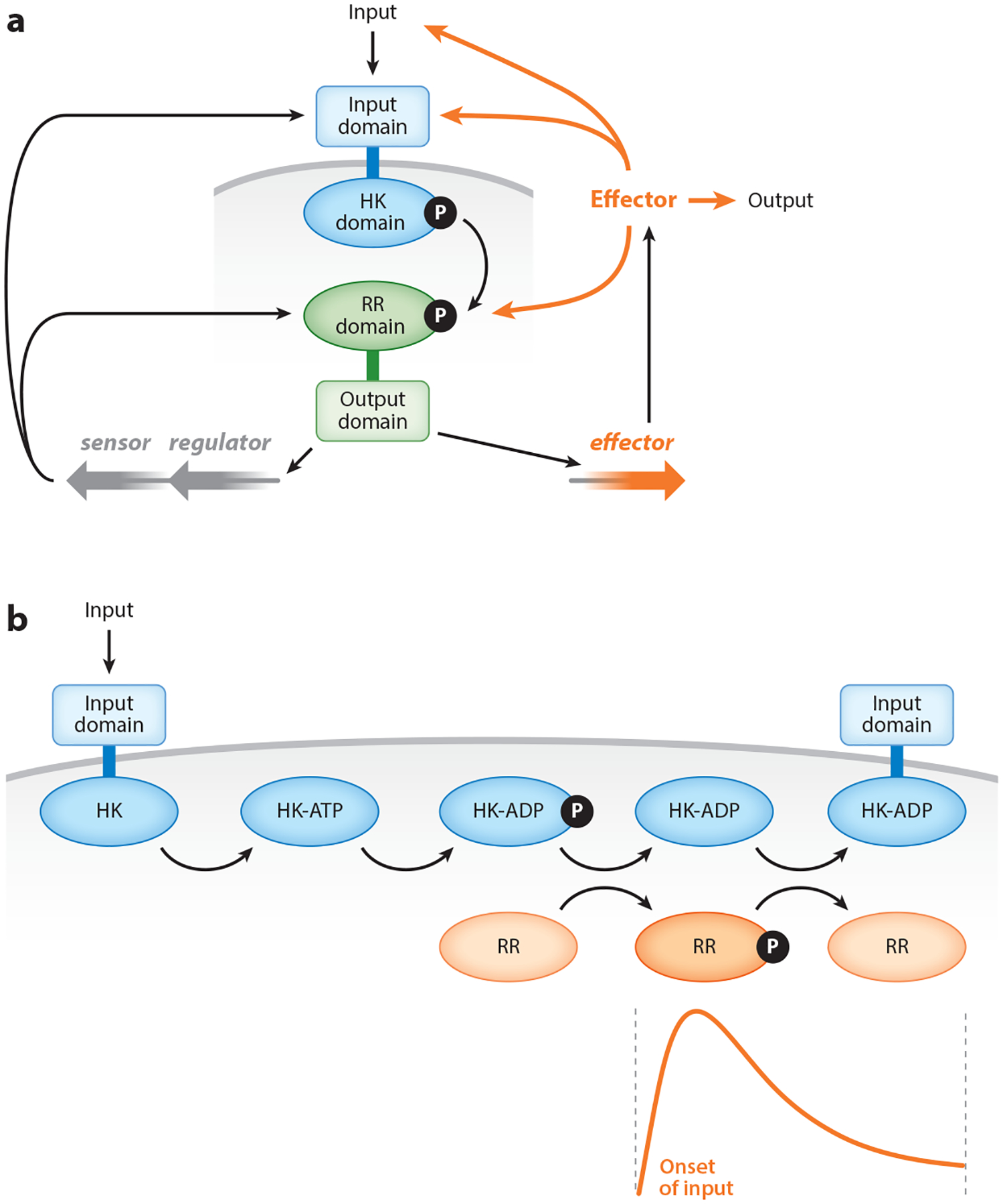Figure 2.

Feedback control of two-component systems. (a) Extrinsic control of two-component systems by a regulator governing transcription of the genes specifying the sensor and regulator, and by an Effector encoded by a gene under transcriptional control of the regulator. The Effector may affect input access to the sensor (42, 68, 80), bind to the sensor modifying its enzymatic activities (36, 40, 52, 82, 86), or modify the phosphorylation state of the regulator in a direct or indirect fashion (104). Effectors may act at other levels and are not necessarily proteins. (b) Intrinsic feedback by a sensor (from left to right) that responds to an input by binding to ATP, autophosphorylating at a histidine residue, and leaving ADP in the nucleotide-binding pocket. The regulator (RR) phosphorylates from the phosphorylated sensor. The ADP-bound sensor is in the phosphatase mode that promotes dephosphorylation of the phosphorylated regulator. The inset graph depicts the changes in the levels of phosphorylated regulator when an organism is switched from noninducing to inducing conditions for the sensor. Abbreviation: HK, histidine kinase.
